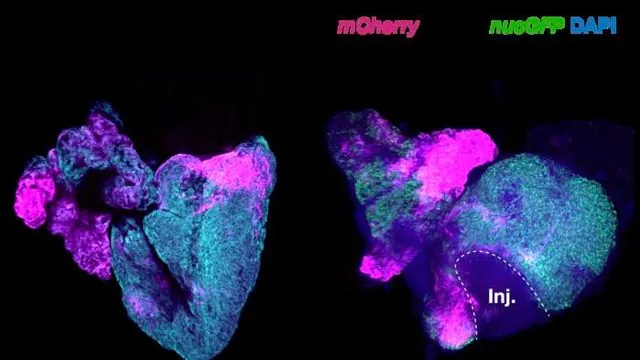
CRISPR Breakthrough: Humans May Soon Regrow Heart Tissue Like Zebrafish!
2025-07-10
Author: Mei
In a stunning revelation, scientists are uncovering groundbreaking ways to help humans regenerate damaged heart muscle, drawing inspiration from the remarkable abilities of zebrafish.
Nature's Marvel: Zebrafish Heart Regeneration
Unlike humans, who lack the ability to heal heart damage due to disease, certain animals like zebrafish possess a unique ability to regenerate heart tissues after injury. Researchers have discovered specific genes in zebrafish that spring into action when heart damage occurs, effectively patching up the organ as if it were brand new.
A New Hope for Heart Repair
Led by scientists from the University of California, Berkeley, and the California Institute of Technology, this pioneering research aims to identify the key genes that could be activated in humans to spur heart repair. By leveraging CRISPR technology, the team believes we could reactivate similar genetic pathways in human hearts, much like those utilized during embryonic development.
Megan Martik, a leading researcher, emphasizes, "Zebrafish and humans have similar cell types that form during development. However, zebrafish retain regenerative abilities that humans lost along the evolutionary path. How can we harness this natural talent for human benefit?"
Unlocking the Secrets of Cell Regeneration
The scientists' research highlights the heart's cellular makeup, which includes muscle, nerve, and blood vessel tissues. In zebrafish, approximately 12 to 15% of heart cells are derived from a special group of stem cells known as neural crest cells. While humans have similar cells that contribute to various organs, we can't regenerate heart tissues as efficiently as zebrafish can.
Interestingly, when heart injury occurs, the surrounding zebrafish cells revert to an earlier, undifferentiated state, enabling them to develop into new heart muscle cells, or cardiomyocytes.
Cutting-Edge Research: CRISPR at Work
In their recent studies, the researchers employed single-cell genomics to analyze gene activity in zebrafish neural crest cells destined to become heart muscle cells. By cleverly inducing heart ventricle damage and genomically profiling the recovery process, they pinpointed essential genes that facilitate the regenerative process.
One pivotal gene, egr1, appears to kickstart the entire regeneration circuit, suggesting it could hold the key to human heart repair.
A Vision for the Future of Heart Therapy
Martik is relentless in her quest to explore gene circuits involved in zebrafish regeneration. With CRISPR techniques being developed to target gene enhancers in human-derived heart organoids, she envisions a future where activating these pathways could enable us to stimulate repair not just in hearts but in other neural crest-derived tissues, such as the jaw and peripheral nervous system.
"If we can find the molecular switch to activate necessary gene programs for regeneration, it's entirely feasible to develop CRISPR therapies for human tissue repair," Martik asserts, believing that California's Berkeley is at the forefront of this transformative research.
The Implications of This Research
This promising avenue of research opens thrilling possibilities for the future of cardiac health, paving the way for therapies that could one day allow humans to heal heart injuries naturally. As science inches closer to bridging the gap between human physiology and nature's healing powers, the hope for effective heart regeneration becomes more tangible.



 Brasil (PT)
Brasil (PT)
 Canada (EN)
Canada (EN)
 Chile (ES)
Chile (ES)
 Česko (CS)
Česko (CS)
 대한민국 (KO)
대한민국 (KO)
 España (ES)
España (ES)
 France (FR)
France (FR)
 Hong Kong (EN)
Hong Kong (EN)
 Italia (IT)
Italia (IT)
 日本 (JA)
日本 (JA)
 Magyarország (HU)
Magyarország (HU)
 Norge (NO)
Norge (NO)
 Polska (PL)
Polska (PL)
 Schweiz (DE)
Schweiz (DE)
 Singapore (EN)
Singapore (EN)
 Sverige (SV)
Sverige (SV)
 Suomi (FI)
Suomi (FI)
 Türkiye (TR)
Türkiye (TR)
 الإمارات العربية المتحدة (AR)
الإمارات العربية المتحدة (AR)